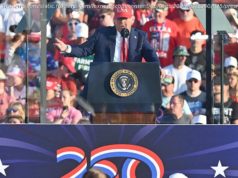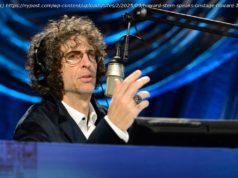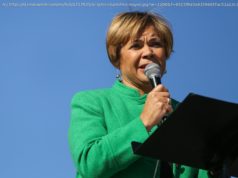Not a total victory, but a clear signal of one.
It’s not a final victory, but the Supreme Court’s 5-4 ruling on NIFLA v Becerra makes it clear what the ultimate outcome will be. The ruling strikes down forced-speech laws in California that apply to pro-life crisis pregnancy centers that require them to provide referrals to abortion centers, among other issues. In the majority opinion written by Justice Clarence Thomas, the court reversed the Ninth Circuit and the district court’s decision not to grant a temporary injunction against the state while the National Institute of Family and Life Advocates fought the law in court.
Thomas and the four conservative justices ruled that NIFLA was likely to prevail on the merits against the forced-speech requirements imposed by California:
(a) Content-based laws “target speech based on its communicative content” and “are presumptively unconstitutional and may be justified only if the government proves that they are narrowly tailored to serve compelling state interests.” Reed v. Town of Gilbert, 576 U. S. ___, ___. The licensed notice is a content-based regulation. By compelling petitioners to speak a particular message, it “alters the content of [their] speech.” Riley v. National Federation of Blind of N. C., Inc., 487 U. S. 781,795. For example, one of the statesponsored services that the licensed notice requires petitioners to advertise is abortion—the very practice that petitioners are devoted to opposing. Pp. 6–7.
(b) Although the licensed notice is content-based, the Ninth Circuit did not apply strict scrutiny because it concluded that the notice regulates “professional speech.” But this Court has never recognized “professional speech” as a separate category of speech subject to different rules. Speech is not unprotected merely because it is uttered by professionals. The Court has afforded less protection for professional speech in two circumstances—where a law requires professionals to disclose factual, noncontroversial information in their “commercial speech,” see, e.g., Zauderer v. Office of Disciplinary Counsel of Supreme Court of Ohio, 471 U. S. 626,651, and where States regulate professional conduct that incidentally involves speech, see, e.g., Ohralik v. Ohio State Bar Assn., 436 U. S. 447,456. Neither line of precedents is implicated here.…
The only justification put forward by the state legislature was ensuring that pregnant women know when they are receiving medical care from licensed professionals, but California denied that the justification for the law was that women did not know what kind of facility they are entering when they go to a crisis pregnancy center. Even if the State had presented a nonhypothetical justification, the FACT Act unduly burdens protected speech. It imposes a government-scripted, speaker-based disclosure requirement that is wholly disconnected from the State’s informational interest. It requires covered facilities to post California’s precise notice, no matter what the facilities say on site or in their advertisements. And it covers a curiously narrow subset of speakers: those that primarily provide pregnancy-related services, but not those that provide, e.g., nonprescription birth control. Such speaker-based laws run the risk that “the State has left unburdened those speakers whose messages are in accord with its own views.” Sorrell, supra, at 580. For these reasons, the unlicensed notice does not satisfy Zauderer, assuming that standard applies.
In the main body of the opinion, Thomas pointed out just how burdensome the law is to pro-life crisis pregnancy centers. The impact is so hostile as to be an obvious attempt by the government to impede speech it doesn’t like:
The notice applies to all “print and digital advertising materials” by an unlicensed covered facility. §123472(b). These materials must include a government-drafted statement that “[t]his facility is not licensed as a medical facility by the State of California and has no licensed medical provider who provides or directly supervises the provision of services.” §123472(b)(1). An unlicensed facility must call attention to the notice, instead of its own message, by some method such as larger text or contrasting type or color. See §§123472(b)(2)–(3). This scripted language must be posted in English and as many other languages as California chooses to require. As California conceded at oral argument, a billboard for an unlicensed facility that says “Choose Life” would have to surround that two-word statement with a 29-word statement from the government, in as many as 13 different languages. In this way, the unlicensed notice drowns out the facility’s own message. More likely, the “detail required” by the unlicensed notice “effectively rules out” the possibility of having such a billboard in the first place.
Anthony Kennedy wrote in a concurrence that this should be taken broadly as a brake against government-imposed speech, not just when it comes to abortion. Kennedy in his brief dissent rips California’s government for its posture as “forward thinking” in promulgating impositions on speech and thought
It does appear that viewpoint discrimination is inherent in the design and structure of this Act. This law is a paradigmatic example of the serious threat presented when government seeks to impose its own message in the place of individual speech, thought, and expression. For here the State requires primarily pro-life pregnancy centers to promote the State’s own preferred message advertising abortions. This compels individuals to contradict their most deeply held beliefs, beliefs grounded in basic philosophical, ethical, or religious precepts, or all of these. And the history of the Act’s passage and its underinclusive application suggest a real possibility that these individuals were targeted because of their beliefs.
The California Legislature included in its official history the congratulatory statement that the Act was part of California’s legacy of “forward thinking.” App. 38–39. But it is not forward thinking to force individuals to “be an instrument for fostering public adherence to an ideological point of view [they] fin[d] unacceptable.” Wooley v. Maynard, 430 U. S. 705,715 (1977). It is forward thinking to begin by reading the First Amendment as ratified in 1791; to understand the history of authoritarian government as the Founders then knew it; to confirm that history since then shows how relentless authoritarian regimes are in their attempts to stifle free speech; and to carry those lessons onward as we seek to preserve and teach the necessity of freedom of speech for the generations to come. Governments must not be allowed to force persons to express a message contrary to their deepest convictions. Freedom of speech secures freedom of thought and belief. This law imperils those liberties.
In his dissent, Stephen Breyer frets about those broader applications:
I, too, value this role that the First Amendment plays—in an appropriate case. But here, the majority enunciates a general test that reaches far beyond the area where this Court has examined laws closely in the service of those goals.






